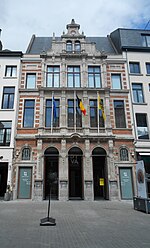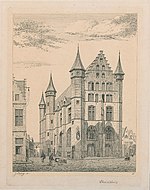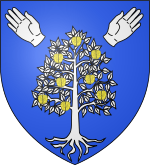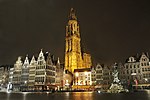Antwerp (district)

Antwerp District coincides with the old city of Antwerp. Since the municipality and contemporary city of Antwerp in the Flemish Region of Belgium was decentralized in 2000, this district level of government steadily increased its administrative powers. It comprises 22 neighbourhoods: Antwerpen Noord (with Stuivenberg, Seefhoek, Amandus-Atheneum, Chinatown) Brederode Centraal Station (with Kievitwijk, Diamant, Statiekwartier, Joods Antwerpen) Den Dam Eilandje Haringrode Harmonie Historisch Centrum Kiel Linkeroever Luchtbal-Rozemaai-Schoonbroek (with Luchtbal, Rozemaai, Schoonbroek) Markgrave Meir Middelheim Schipperskwartier Sint-Andries Stadspark Tentoonstellingswijk Theaterbuurt, also called Quartier Latin Universiteitswijk Zurenborg Zuid, also called Zuid - Museum
Excerpt from the Wikipedia article Antwerp (district) (License: CC BY-SA 3.0, Authors, Images).Antwerp (district)
Handschoenmarkt, Antwerp
Geographical coordinates (GPS) Address Phone number Website Nearby Places Show on map
Geographical coordinates (GPS)
| Latitude | Longitude |
|---|---|
| N 51.220555555556 ° | E 4.3997222222222 ° |
Address
Del Sud classico
Handschoenmarkt
2000 Antwerp (Antwerp)
Antwerp, Belgium
Open on Google Maps











